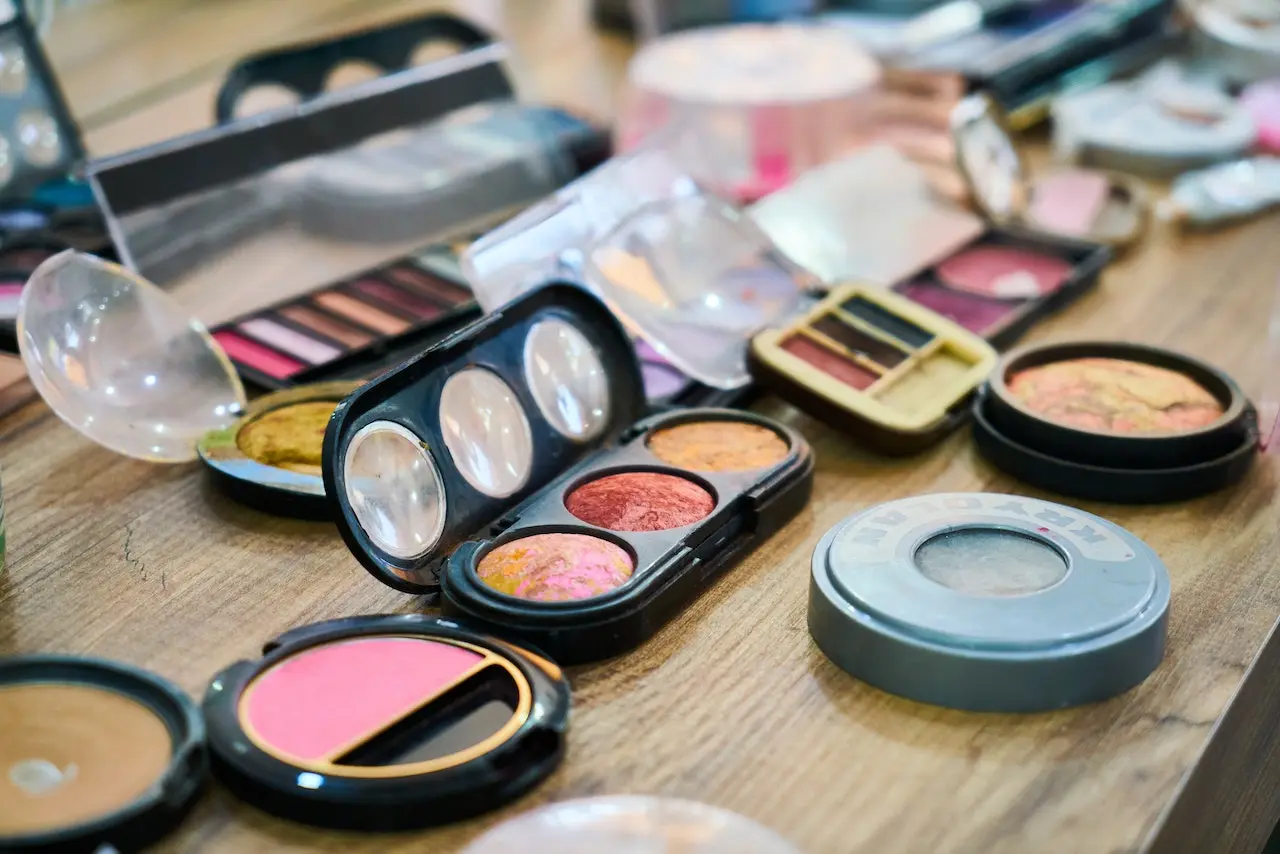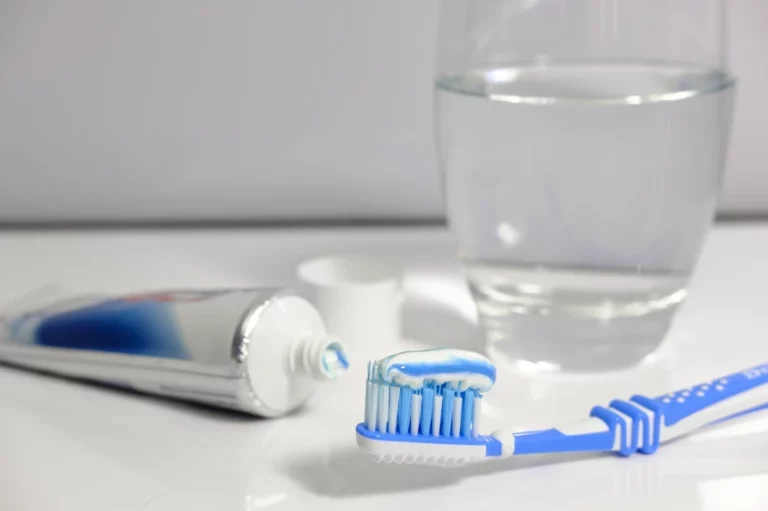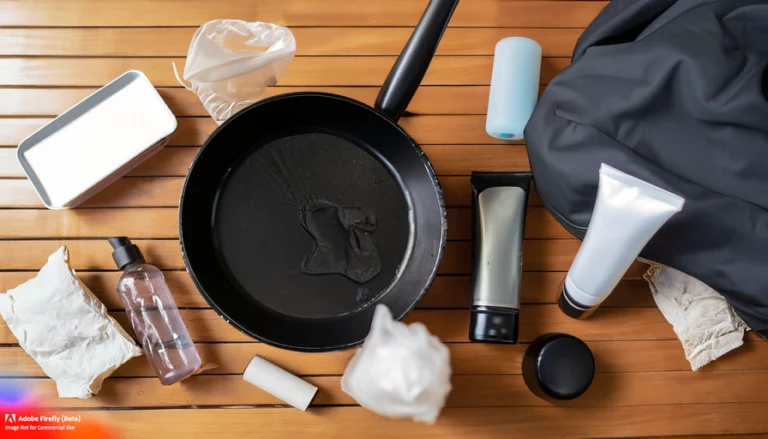Toxic Ingredients in Cosmetics
Every day we are exposed to thousands of compounds, heavy metals, and toxic chemicals that are present everywhere: in the food we eat, in the water we drink, in the air, we breathe, and in the consumer products we use.
Regulatory bodies of the countries try to protect people by prohibiting the use in food, packaging, and consumer products of those substances that have been shown to have adverse health effects.
However, in many places, cosmetics and personal care products are not fully regulated and contain ingredients that we should avoid. Let’s see here which are the most common Toxic Ingredients in Cosmetics and Personal Care Products.
Este artículo también está disponible en Español
The most common and Harmful Toxins in Cosmetics and Personal Care Products
Due to the large number of ingredients contained in cosmetics and personal care products, it is practically impossible to avoid them. However, it is important to know the most common and harmful elements to avoid and reduce exposure. Below we will mention those that we consider most relevant:
Heavy Metals
Heavy metals like lead, arsenic, mercury, aluminum, cadmium, chromium, and nickel are found in a wide variety of cosmetics and personal care products including lipstick, toothpaste, eyeliner, and nail color. Some heavy metals are added as ingredients, while others are contaminants.
Heavy metals are elements that can be toxic and very dangerous even in low concentrations, and many of them are not required by any biological function in our bodies. At least 23 different heavy metals have been identified that can contribute to acute or chronic toxicity. They accumulate in the body, hiding in fat cells, and therefore are difficult to remove. Heavy metals can cause inflammation, fatigue, brain damage, cancer, and organ failure.
Parabens
Parabens are a group of chemicals that are commonly used as artificial preservatives in cosmetic and personal care products. Preservatives are used to prevent the growth of harmful bacteria and mold. Methylparaben, propylparaben, butylparaben, and ethylparaben are the most widely used parabens in cosmetics.
Parabens are widely used in shampoos, conditioners, moisturizers, face and skin cleaners, sunscreens, deodorants, shaving gels, toothpaste, makeup, and many other products. Lab studies have detected parabens in nearly all samples taken from adults in the U.S
Research shows that parabens can disrupt hormones in the body, harm fertility, and reproductive organs, cause skin irritation, affect birth outcomes and increase the risk of cancer.
Formaldehyde
Formaldehyde is a colorless, strong-smelling gas used in a wide range of industries and products including building materials, walls, cabinets furniture, cosmetics, and personal care products. It is used as a preservative to help prevent microbes from growing in water-based products.
Many cosmetics and personal products contain formaldehyde-based preservatives which break down over time, releasing formaldehyde. These preservatives may appear on the product label as Quaternium-15, DMDM hydantoin, Imidazolidinyl urea, Diazolidinyl urea, Polyoxymethylene urea, Sodium hydroxymethylglycinate, Bromopol, and Glyoxal.
They’re mostly used in mascara, blush, nail polish and glue, lotion, shampoo, hair gel and hair-smoothing products, baby shampoo, body soap and wash color cosmetics, and eyelash glue.
The International Agency for Research on Cancer (IARC) classifies formaldehyde as a human carcinogen. It is also linked to allergic skin reactions and asthma.
Phthalates
Phthalates are a group of chemicals used to make plastics more durable. They are often called plasticizers. Some phthalates are used to help dissolve other materials. Phthalates are in hundreds of products, such as vinyl flooring, lubricating oils, cosmetics, and personal-care products.
Phthalates in cosmetics are used as a plasticizer in products such as nail polishes to reduce cracking by making them less brittle (DBP or dibutyl-phthalate), in hair sprays to help avoid stiffness (DMP or dimethyl-phthalate), and as a solvent and fixative in fragrances (DEP or diethyl-phthalate). Phthalates are also found in color cosmetics, body washes, soap, shampoo, and hair care products.
Although phthalates may be identified on the product label as Phthalate, DEP, DBP, and DEHP or DEP, phthalates are often hidden under the description of “fragrance.”
Numerous studies have linked phthalates to endocrine disruption, developmental and reproductive toxicity, cancer, birth defects, decreased IQ, obesity, autism, and neurological issues. Due to these many health concerns, phthalates have been banned from cosmetics in the European Union and other countries but remain prevalent in many U.S. products.
Polyethylene Glycols (PEGs)
Polyethylene glycols or PEGs are petroleum-based compounds that are widely used in cosmetics as thickeners, solvents, softeners, and moisture carriers. It provides the creamy texture of many cosmetics, which is why it is often used as a base for cosmetic creams. For this reason, they are commonly found in mousse and hair lotions.
PEG compounds are linked to genotoxicity and may cause skin irritation and systemic toxicity. PEGs may also be contaminated with ethylene oxide and 1,4-dioxane which are classified as human carcinogens, can harm the nervous system, and may interfere with human development.
Butylated Compounds (BHA & BHT)
Butylated hydroxyanisole (BHA) and butylated hydroxytoluene (BHT) are synthetic antioxidants used as preservatives in a variety of cosmetics and personal care products that contain oils and fats. Both of these chemicals are also used as preservatives in foods, food packaging, and animal feed. Butylated Compounds can be identified in the product label as BHA and BHT.
They can be found in makeup and other cosmetics like eyeliner, eyeshadows, lip products, hair products, sunscreens, antiperspirants and deodorants, fragrances, and creams.
Many studies have found that these two chemicals are linked to cancer, endocrine disruption, organ damage, and developmental and reproductive toxicity. They can accumulate in the body over time, leading to greater harm.
Polyfluoroalkyl (PFAS)
PFAS stands for Per- and Poly-Fluoro-Alkyl Substances, and are manmade chemicals used in industry and consumer products for more than 7 decades. They have been used to make nonstick cookware, water-repellent clothing, stain-resistant fabrics and carpets, some cosmetics, firefighting foams, and products that resist grease, water, and oil.
Manufacturers may use these chemicals in cosmetics and personal care products to increase their durability and water resistance. You can find PFAS in products like mascara, foundation, lipstick, eyeliner, eyeshadow, nail polish, lotion, cleansers, and shaving cream.
Research has found that PFAS is a highly persistent and potentially toxic chemical. Waterproof, sweatproof, and long-lasting cosmetics contain higher levels of thousands of chemicals identified as PFAS. PFAS accumulates in the body instead of being broken down naturally, worsening its harmful effects over time.
PFAS has been linked to serious kidney, liver, immunological, developmental, and reproductive issues. PFAS can enter the bloodstream through dermal absorption, and concerns have also been raised regarding absorption by way of tear ducts.
Siloxanes
Siloxanes are silicone-based compounds that are used in cosmetics to soften, smooth, and moisten, giving the product a silky and smooth feeling. They make hair products dry more quickly and deodorant creams slide on more easily. They are also used extensively in moisturizers and facial treatments. Siloxanes can also be found in medical implants, water-repelling windshield coatings, building sealants, and lubricants.
On product labels can be identified with “siloxane,” “ethicone”, “methicone” and “silane” as suffixes on ingredient names, like Cyclopentasiloxane, dimethicone, and triethyoxycaprylylsilane.
The research found Siloxanes can be an endocrine disruptor, cause reproductive harm, damage the immune system, and reduce fertility.
Octinoxate
Octinoxate is a chemical substance used to filter UVB rays from the sun, and it is mainly used in cosmetics such as sunscreen but can be also found in hair color products and shampoos, lipstick, nail polish, and skin creams.
Octinoxate can be also identified on the label of the product as Octyl-Methoxycinnamate (OMC), Parsol, Parsol MCX, Parsol MOX, Escalol, and 2-Ethylhexyl p-methoxycinnamate.
This chemical is rapidly absorbed through the skin and may cause health damages such as endocrine disruption, reproductive organs, and developmental toxicity, and cripple the function of your thyroid.
P-Phenylenediamines
P-Phenylenediamine, known as PPD, is part of a group of chemicals called aromatic amines, which are found in the plastic and chemical industries as byproducts of manufacturing. In addition to the manufacturing of rubber and certain polymers, it is used in many forms of permanent hair dyes called oxidative dyes.
As a known skin sensitizer, it can cause allergic skin reactions and can alter genetic material, damaging the DNA in your cells. Over time, damage to cellular DNA can cause cells to become cancer cells. p-Phenylenediamine appears to be linked to some forms of cancer such as ovarian, breast, and bladder cancer.
Benzophenone
Benzophenone is found naturally in some foods (such as wine grapes and muscatel grapes) and is added to other foods as a flavoring. Due to its quality of filtering UV light, it is used in perfumes and personal care products to prevent them from losing aromas and colors in the presence of ultraviolet light, and as a fragrance enhancer.
Benzophenone and derivatives of benzophenone, such as benzophenone-2 (BP2) and oxybenzone (benzophenone-3 or BP3), are used in Lip balm, Nail polish, Foundations, Sunscreens, Fragrance, Shampoo, Conditioner, Hair spray, Moisturizers.
On product packaging are labeled as Benzophenone, Ingredients containing the word benzophenone (for example benzophenone-2), BP# (for example BP2), Oxybenzone, Sulisobenzone, Sulisobenzone sodium.
Benzophenone and its derivatives are possibly linked to Cancer, Endocrine disruption, Organ System Toxicity, Skin Irritation, and Ecotoxicity.
Fragrance
Fragrances are natural or synthetic essential oils or aromatic compounds that are used in cosmetics and personal care products to provide a pleasant scent, mask the odor of some ingredients, and enhance the product user experience.
Fragrances are found in most personal care products including sunscreen, shampoo, soap, body wash, deodorant, body lotion, makeup, facial cream, skin toner, serums, exfoliating scrubs, and perfume.
Many products mention “fragrance” on their label, but very few name the specific ingredients that make up the fragrance, and its components vary from product to product. This lack of disclosure prevents consumers from knowing the full list of ingredients and prevents them from avoiding those they deem unsuitable for use. Find it in labels such as Fragrance, Perfume, Parfum, Essential oil blend, and Aroma.
More than 3,000 ingredients are reported to be used in Fragrance compounds, including Benzophenone, BHA and BHT, Formaldehyde, Oxybenzone, Propylparaben (Propyl p-hydroxybenzoate), 1,4-Dioxane, Acetaldehyde, among others. These materials have shown adverse health effects including cancer, reproductive toxicity, allergies, and sensitivities.
Conclusion
Although there are thousands of ingredients contained in cosmetics and personal care products and it is practically impossible to avoid them, it is important to know the most common and harmful elements to avoid and reduce exposure.
European Union and other countries have banned many toxic ingredients in cosmetics, including phthalates, going one step forward than the United States.
Carefully read the labels on the product to identify those components you want to avoid and choose toxin-free products when possible. Be aware that not all harmful components will be disclosed on the package because they may be components of fragrance and so are exempt from labeling requirements.







In my opinion, it’s important for consumers to be aware of the potential risks associated with toxic ingredients in cosmetics. While not all chemicals are harmful, it’s always a good idea to read labels and research ingredients to ensure that we are making informed decisions about what we put on our skin.
A few questions from me will be:
Are there any regulations in place to ensure that cosmetics are safe for use?
What are some natural alternatives to traditional cosmetics that are free from toxic ingredients?
How can we educate ourselves and others about the potential risks of toxic ingredients in cosmetics?
Thank you for your interest and comments about this article. Here are some brief answers to your questions:
– There are some regulations for cosmetics safety in the U.S., but they are not very strict or comprehensive. The FDA oversees the cosmetics industry but does not approve or test products before they go on the market. The new MoCRA law (signed on Dec 2022) gives the FDA more authority and responsibilities over cosmetics, such as requiring registration, listing, reporting, and safety substantiation of products. Other regions like the European Union, Canada, and Australia have stricter regulations and have banned many more compounds in cosmetics than the U.S.
– Some natural alternatives to traditional cosmetics are free from toxic ingredients. Natural cosmetics are made from ingredients derived from natural sources, such as plants or minerals. These ingredients may have beneficial properties for the skin, such as vitamins, antioxidants, essential oils, etc. Some examples are egg oil, jojoba oil, shea butter, fruit pigments, quartz sand, and plant extracts.
– There are several ways to educate ourselves and others about the potential risks of toxic ingredients in cosmetics. One way is to use reliable sources of information, such as the EWG Skin Deep database or the Campaign for Safe Cosmetics website. Another way is to share our knowledge and experiences with our friends, family, and social media followers. A third way is to buy natural cosmetics from brands that are transparent, ethical, and sustainable. We can look for certifications or labels that indicate the quality and origin of the ingredients, such as NATRUE, USDA Organic, or Leaping Bunny.
I hope this reply has been helpful and informative for you. Thank you for reading this article, please let me know if you have additional questions.
What I found to be so amazing is the amount of chemicals we are exposed to, things that we don’t even to be harmful are really harmful or contain substances that are harmful. Many years ago it was interesting to hear that many sprays we are using are destroying the ozone layer. It seems as if we cant get away from these chemicals that are found in products that we use on a daily basis. Thanks for sharing.
Thank you for sharing your thoughts on the topic. Many products we use on a daily basis indeed contain harmful chemicals that we may not even be aware of. It is important to be aware of what we are putting on our skin and in our bodies, Reading the labels of the products we use and avoiding those that contain harmful chemicals is important, however, some toxins are hidden under general compounds like fragrance, or are not listed.